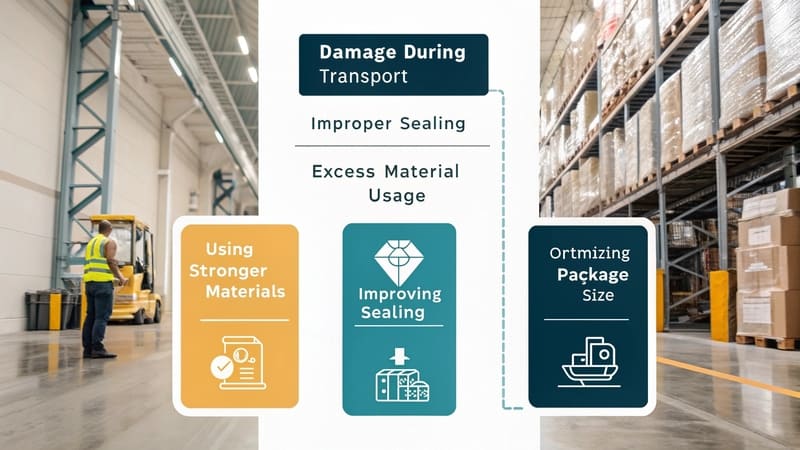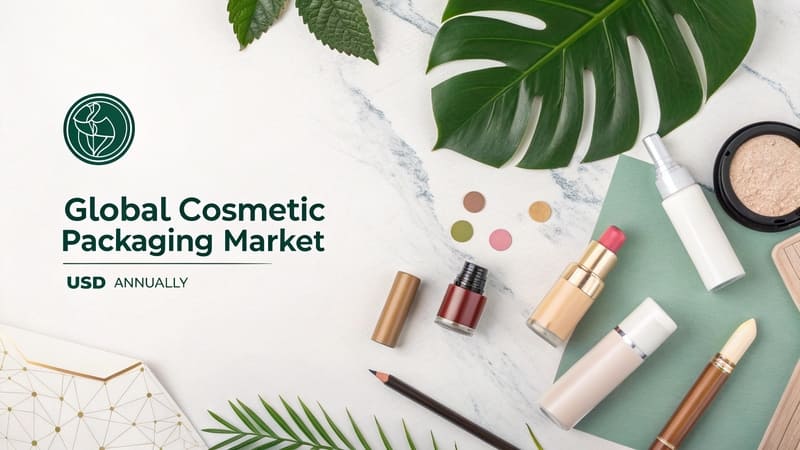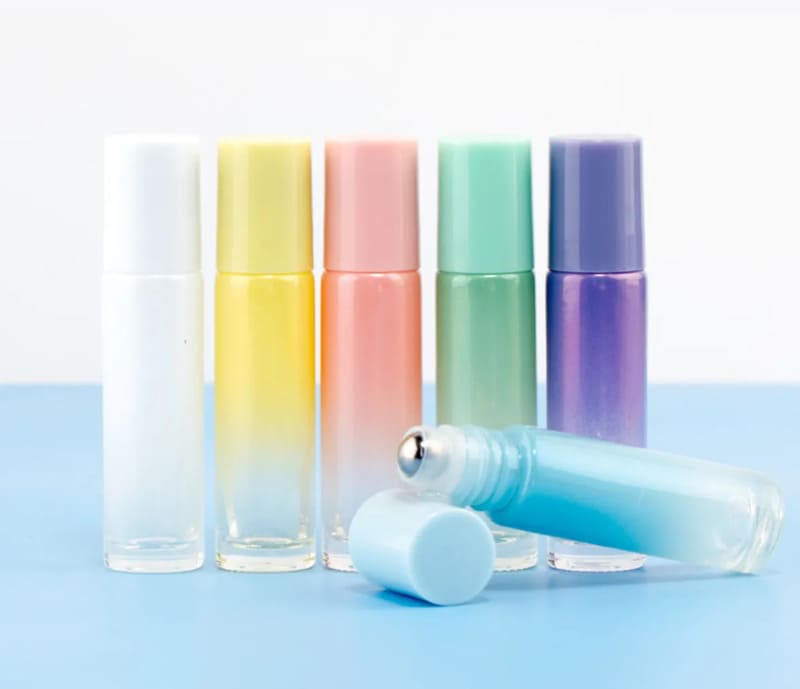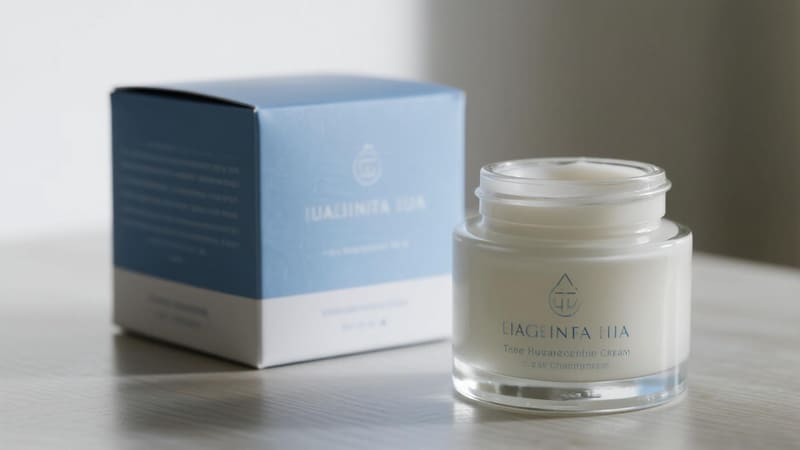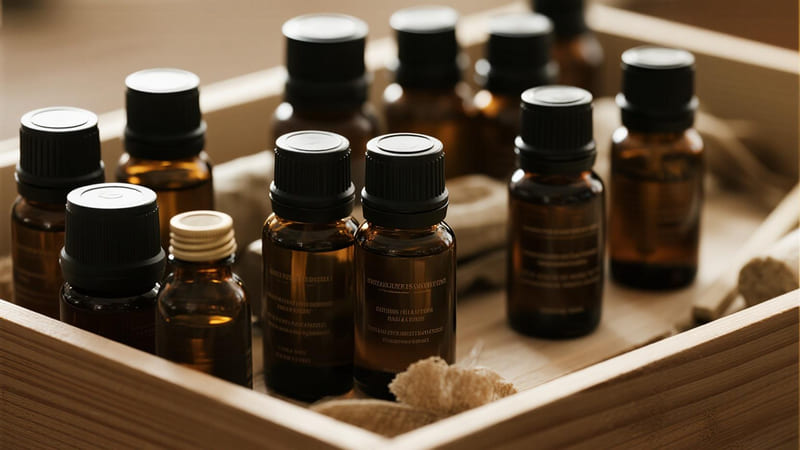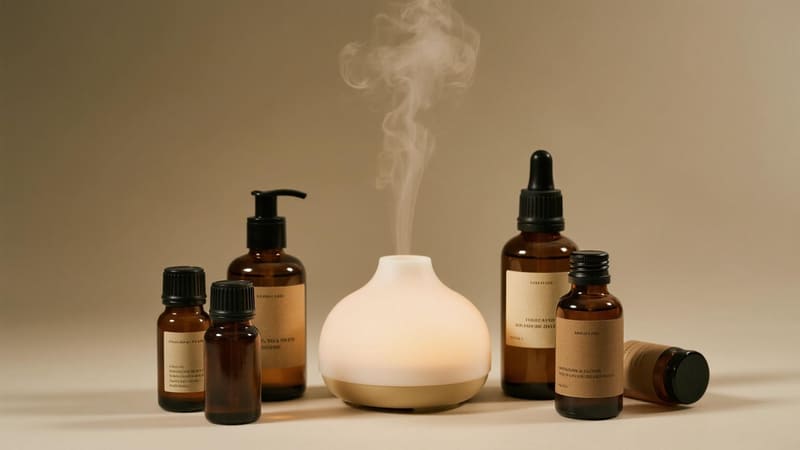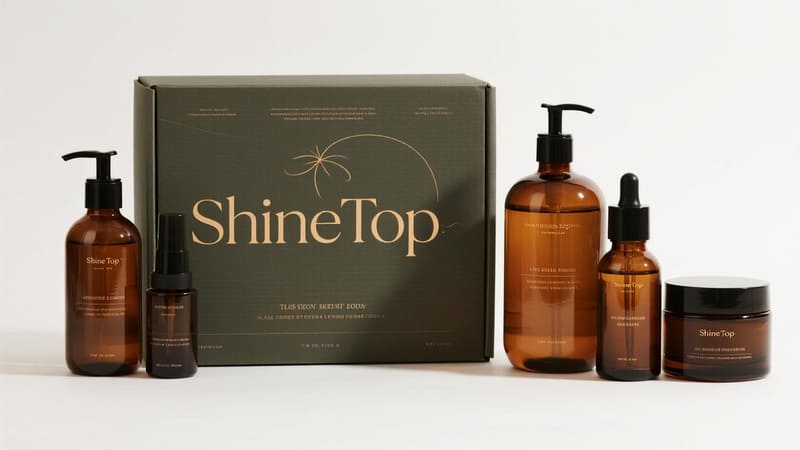Want unique packaging but don’t know where to start? Generic packaging makes your brand blend in, failing to attract customers. Customization options abound, let’s explore where to find your perfect packaging partner.
You can customize cosmetic packaging with specialized manufacturers offering design, material selection, and diverse decoration options. Many, like us at ShineTop, provide end-to-end services from concept to production, ensuring your vision becomes reality and sets your brand apart.
Knowing you can customize is one thing; knowing where and how is crucial for success. Creating packaging that truly represents your brand involves understanding the best options, potential pitfalls, the market landscape, and sustainable choices. As a global packaging manufacturer with over 20 years of experience, we’ve helped countless brands like yours. Let’s explore these aspects to help you find the ideal customization partner and strategy.
What is the best packaging for cosmetics?
Struggling to pick the perfect container for your beauty line? The wrong choice can compromise product safety and appeal, ultimately hurting your sales. Let’s identify what makes packaging truly "best" for your specific cosmetic products.
The best cosmetic packaging safely preserves the product, prevents leaks, attracts customers with its aesthetics, and aligns with your brand’s sustainability goals. It’s a balance of material integrity, functionality, design appeal, and eco-consciousness, tailored to your product and target audience.
When we talk about the "best" packaging, it’s not a one-size-fits-all answer. It really depends very much on your specific product and the story your brand wants to tell. At ShineTop, we guide clients through this selection process every day.
Key Factors for "Best" Packaging
-
Product Compatibility: This is number one. The material must not react with your cosmetic formula. Glass is excellent because it’s inert, making it great for many sensitive products. Plastics, like PET (polyethylene terephthalate) or PP (polypropylene), are versatile but need careful consideration for compatibility, especially with oil-based formulas or certain active ingredients. We always advise performing compatibility testing in our labs.
-
Protection and Preservation: Does the packaging shield the product from light, air, or potential contamination that could degrade it? For instance, airless pump bottles are fantastic for sensitive ingredients like Vitamin C or natural formulations because they minimize air exposure.
-
User Experience: Is it easy for your customer to open, use, and dispense the product? A smooth pump mechanism, an easy-to-open jar, or a precise dropper can significantly enhance how your customer feels about your product.
-
Aesthetics & Branding Alignment: Does the packaging look good and accurately reflect your brand image? The color, shape, finish (like matte or glossy), and any decoration (printing, hot stamping) should align with your brand identity – whether it’s aiming for a luxury, eco-conscious, clinical, or playful feel.
-
Cost-Effectiveness: The packaging needs to fit within your overall budget, considering not just the unit cost but also implications for shipping (weight and volume).
Here’s a quick comparison for common needs we often address:
| Need Consideration | Primary Material/Type Examples | Key Benefit for Your Product |
|---|---|---|
| Luxurious Feel | Glass, Heavy-wall PETG, Aluminum | Delivers a premium unboxing and usage experience |
| Sensitive Formula | Airless pumps, Opaque Glass/PET | Protects ingredients from oxidation/degradation |
| Cost-Effective Liquid | Standard PET bottles, PE tubes | Lightweight, versatile, and economical at scale |
| Thick Creams/Balms | Wide-mouth Jars (PP, PET, Glass) | Allows easy access for viscous products |
| Precise Application | Dropper bottles, Fine-tip tubes | Ensures controlled dosage for potent formulas |
For instance, Anna, one of our clients who has her own cosmetics brand in Thailand, needed elegant yet functional packaging for her new premium serum. We worked with her to select a sleek glass bottle with a high-quality dropper. This choice not only looked luxurious but also ensured precise application for her customers, matching her brand’s quality promise.
What are the issues with cosmetic packaging?
Worried about packaging problems that could harm your brand’s reputation or lead to lost sales? Issues like leaks, breakage, poor sustainability, or simply a design that doesn’t work well can lead to significant customer dissatisfaction. Understanding common pitfalls helps you choose smarter and avoid costly mistakes.
Common issues include material incompatibility leading to product spoilage, leakage due to poor seals or mismatched components, breakage during transit or use, over-packaging contributing to waste, a lack of sustainability (e.g., non-recyclable materials), and designs that are difficult for consumers to use efficiently.
Navigating the world of cosmetic packaging means being aware of potential challenges. Addressing these proactively is key to ensuring your products reach customers perfectly and sustainably. As a supplier, we see these issues and help brands avoid them.
Common Packaging Problems & Proactive Solutions
- Material Incompatibility: This is a classic, yet critical issue. If the packaging material reacts with the cosmetic formula, it can alter the product’s color, scent, efficacy, or even stability.
- Our Solution: We always recommend conducting rigorous compatibility testing with your specific formula using samples of the chosen packaging. This is a standard part of our development process.
- Leakage & Sealing Failures: Nothing frustrates a customer more or damages brand perception quicker than a leaky product. This often stems from poor cap design, incorrect liner/wadding selection, or tolerance issues between components.
- Our Solution: Strict quality control on closures, ensuring correct torque during assembly, appropriate liner selection based on the formula, and performing vacuum leak tests.
- Breakage/Damage: Glass is elegant but inherently fragile. Thin-walled plastics can crack under pressure or if dropped.
- Our Solution: Advising on appropriate material thickness, suggesting protective secondary packaging for shipping (like custom inserts in boxes), and exploring more robust alternatives like PETG or thicker PET where suitable.
- Sustainability Concerns: Increasing consumer awareness means excessive plastic use, mixed materials that make recycling difficult, and a lack of clear disposal instructions are major pain points.
- Our Solution: We actively promote mono-materials, offer Post-Consumer Recycled (PCR) content, develop refillable packaging systems, and advise on clear recycling labeling.
- Over-Packaging: Using too much material isn’t just wasteful; it adds unnecessary cost and can make the product seem less eco-friendly.
- Our Solution: We work with brands to optimize packaging design for material efficiency, ensuring it’s protective but not excessive.
- Poor User Experience: This includes containers that are hard to open (especially for some demographics), pumps that clog easily, or packaging that doesn’t allow the consumer to dispense all the product.
- Our Solution: Focusing on user-centric design, offering various dispensing mechanisms for testing, and considering factors like ease of grip and operation.
Mahmud, a client of ours from Iraq who creates custom gift sets with soaps and oils, knows this well. For him, ensuring the glass bottles for his fragrant oils were completely leak-proof within his beautifully designed drawer boxes was absolutely critical. We undertook multiple rounds of testing for seal integrity to give him peace of mind.
How big is the cosmetic packaging market?
Considering custom packaging for your brand and wondering about the scale of the industry you’re entering? Understanding the cosmetic packaging market’s size and trends can inform your investment, strategy, and help you identify opportunities. It shows the demand and potential for innovative solutions.
The global cosmetic packaging market is substantial, valued at tens of billions of USD annually, and is projected to see continued steady growth. This expansion is driven by rising beauty product demand worldwide, continuous innovation in materials and design, and a significant shift towards sustainable packaging trends.
The cosmetic packaging market is a dynamic and truly expansive global industry. Its considerable size directly reflects the massive and ever-growing consumer demand for beauty and personal care products across all continents.
Market Size & Key Growth Drivers
-
Current Valuation: While specific figures can fluctuate slightly based on the year and the reporting source, the market is consistently valued in the tens of billions of US dollars. For example, many reports placed it around the $50 billion USD mark in recent years, with some projections reaching towards $60 billion.
-
Projected Growth: Industry analysts typically forecast a Compound Annual Growth Rate (CAGR) of around 3-5% for the coming years. This steady growth indicates a healthy, resilient, and expanding sector, even with global economic shifts.
-
Key Market Forces:
- Increased Beauty Product Consumption: Particularly potent is the growth in disposable incomes in emerging markets. This, combined with a continued cultural focus on personal appearance and wellness worldwide, drives overall cosmetic sales, which in turn directly necessitates more packaging.
- Product Innovation & Diversity: The beauty industry is famous for its rapid innovation. New formulas, niche product categories (like K-beauty, clean beauty, men’s grooming), and personalized products often require specialized, unique packaging solutions.
- The Sustainability Imperative: This is no longer a niche concern but a major market force. The demand for eco-friendly packaging – recycled materials, biodegradable options, refillable systems – is significantly shaping R&D and investment in the sector.
- E-commerce Expansion: The rise of online beauty sales has its own impact. Packaging needs to be robust enough for individual shipping and also visually appealing ("Instagrammable") to stand out in a digital marketplace.
For a company like ShineTop, with our 60,000㎡ of self-owned factories, this large market means constant opportunities to innovate and serve diverse client needs – from emerging indie brands to large established international companies. For clients like Anna in Thailand, who purchases packaging regularly, it means a wide choice of suppliers and innovative options, but also highlights the need to create truly differentiated packaging to capture attention. Understanding these market dynamics certainly helps in making strategic sourcing and design decisions.
What is the most sustainable packaging for cosmetics?
Want to choose eco-friendly packaging for your cosmetics but feel overwhelmed by the options and claims? "Greenwashing" is unfortunately common, and true sustainability requires careful thought and informed choices, not just buzzwords. Let’s uncover materials and practices that genuinely help reduce environmental impact.
The most sustainable cosmetic packaging often involves a multi-faceted approach: using high percentages of Post-Consumer Recycled (PCR) materials (like PCR plastic, recycled glass, or aluminum), designing for easy and effective recyclability (e.g., mono-materials), offering innovative refillable and reusable systems, or using certified compostable materials where appropriate collection and composting facilities actually exist.
Sustainability in cosmetic packaging isn’t about finding a single "perfect" material that solves all problems; it’s more about a thoughtful, holistic approach that combines several effective strategies. The ultimate goal is to minimize the environmental footprint throughout the entire lifecycle of your packaging – from raw material sourcing to its end-of-life.
Key Strategies for Genuinely Sustainable Packaging
-
Maximize Recycled Content:
- Post-Consumer Recycled (PCR) Plastics (like PET, PP, HDPE): Using plastic that has already been collected, recycled, and reprocessed significantly reduces the demand for virgin fossil-fuel-based plastic production. We at ShineTop are increasingly offering a wide range of PCR options to our clients, helping them meet their sustainability targets.
- Recycled Glass & Aluminum: These materials are champions of circularity. Glass and aluminum can be recycled repeatedly without a significant loss of quality or integrity, making them excellent choices.
-
Design for Recyclability (DfR):
- Mono-materials: Packaging made from a single type of material (e.g., an all-PET bottle and cap, or an all-PP jar and lid) is much easier for existing recycling infrastructure to sort and process effectively. Avoid mixing materials that are hard to separate.
- Avoid Problematic Elements: Certain dark black plastics (which can be invisible to sorting sensors), very small components, or multi-layer mixed-material laminates can be challenging or impossible to recycle in many current systems.
-
Embrace Refillable & Reusable Systems: This is arguably one of the most impactful ways to reduce single-use packaging waste. This can involve designing durable and attractive primary containers that customers keep, with options for them to purchase lightweight refill pouches or utilize in-store refill stations. This model is becoming a hallmark for brands that want to truly lead in sustainability.
-
Material Reduction (Lightweighting & Right-Sizing): Sometimes, the simplest approach is very effective. Using less material in the first place – by making container walls thinner (without compromising integrity), reducing the overall size of the package to fit the product snugly, or eliminating unnecessary layers – directly reduces resource consumption and often lowers shipping emissions.
-
Consider Biodegradable/Compostable Options Carefully: Materials like PLA (polylactic acid, a bioplastic often derived from plant starch) or molded plant fiber pulp can be good options. Important Caution: These usually require specific industrial composting facilities to break down properly, which are not yet widely available to all consumers. If disposed of in standard recycling, they can act as contaminants. Clear consumer education on correct disposal is absolutely vital if you choose this route.
For brands like Anna’s, who places a high value on her eco-conscious brand image, we’ve explored options such as elegant glass containers with a percentage of PCR content, coupled with simplified, recyclable secondary packaging. It’s always about finding the best practical fit that aligns powerfully with brand values and operational realities.
Conclusion
Customizing your cosmetic packaging is very achievable by partnering with experienced manufacturers like ShineTop who offer design expertise and diverse production options. Choose wisely to create standout branding, ensure product integrity, and foster lasting customer satisfaction.



